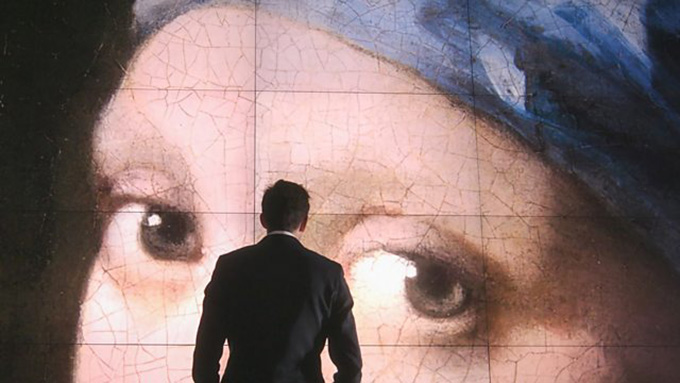
The human being is a visual animal, for which perception through image representation is the closest and most affordable means. It is mentioned in perceptual psychology studies that, in a very high percentage, human individuals attend to the visual rather than the auditory or other perceptive senses.
Technologies have greatly developed the ability to live, access and communicate through images. We call the modern age the Age of Image. But there is an immense paradox in this fact, because we also know, in communication studies , that seeing images accurately is something much rarer and less common than we think.
It often happens to us, in communication, that we discover that images are treasures of information that, despite being visible to all, we do not capture their full symbolic capacity. The image is actually a true and profound enigma, because although it seems to appear before us immediately and automatically, and we take the information it contains for granted, in reality it hides from us and from thought much more than it gives away at first.
And so, the images are messages to be read and attended to in detail, because only thought, attention and intuition allow us to open their enigmatic secret about life.
Mirrors of the depth
The deepest psychologists, non-verbal communication analysts, experts in tracking symptoms, signs and codes, and detectives or journalists know that images must be watched with extreme attention. Understanding and capturing the elements in an image is not an immediate task: images are mirrors of depth, even if they appear to be surface reflections.
A metaphor to understand and access the meaning of images is to consider them closed doors. All the images that surround us are closed doors, carved with glyphs that need to be located and deciphered in order to open them.
The great paradox of the image is that its meaning, apparently automatic, is never such, but that the images contain essential secrets about what happens at every moment. When we read an image correctly, we always discover unperceived elements first, the presence of which is intensely revealing.
Symbols and icons
Graphically, in view of all, but often hidden from many, the most complete truth about our personality, the world we live in and what essentially matters most to us.
Images are always symbolic, and not just iconic: in their meaning there is not only a reflection of reality, but an authentic revelation of multiple meanings, so that an image that we capture, that we carry as our own or that we see of other beings, It is a secret structure that changes with our gaze, and that, as in wonderful tales, offers us a magic mirror that moves at every moment, suddenly showing us hidden signs.
Changing meanings
The image, due to its strange nature, contains advances for our thought and developments of our attention that are always unexpected. There is no static image, rather, while we live, each image offers us different readings of what we are or what happens.
Reading the images and following the thread of their encrypted codes brings out the symbolic expression of reality, which is always before our eyes, and which is always a prophetic revelation. In the location of things, beings and spaces, distances and ties, relationships, hierarchies, loves, hates, destinies, and sizes of existence are expressed. Images can, like dreams, carry out their secret sentences, without our being aware that they were warning us. The image is the most evident and profound expression of the relativity of space and time.
Only thought and reflection, as well as deep attention, can reveal the presence in the images of those meanings expressed by elements that are composed and constellated in them.
Self image
When we look at ourselves in a mirror, we notice that when we look at ourselves we always discover ourselves as someone new, as Barthes expressed , and as with Benjamin’s aura , there is always something that comes from afar bursting into that identical face to ours.
In addition, the image has the capacity to change us, its model, through a powerful game of reflections that models our own form. Well, we too are enigmatic images in the depths, shapes that emerge in a painting, associated with the passing of time, expressions of a meaning. And finally, we dissolve into nothingness and erase ourselves in memory, as if we were also simple images.
Image and thought
There is a very deep relationship between image and thought, which has already been studied by Gestalt experts , such as Rudolph Arnheim , who affirmed that seeing is thinking and thinking is seeing.
What we call thinking is reviewing the images generated by perceptions until regenerating the perceptions themselves, in a constant cycle.
This symbolic vision takes us back to the moment in which the first look was generated. The deep connection cycle between image and thought submerges us in the deep river of existence.
Sometimes, when we think and we inexorably run into the first images that arouse our thoughts, we find in them new messages and accents, emphasis and striking markings, which show us that everything that happens was already written, in its first image. As if the past, the present and the future were contained in a single presence, in the radiant hieroglyphic that was speaking to us.
So when we have images in front of us, and although they seem like simple stage paintings to falsify or store, we must be aware that they contain a language that encompasses and explains us. They constitute thought before thought, an emerging future and burning secrets, warnings of who we are, which we must decipher in their absolute secrecy. As they capture the truth before the truth, the images must be read carefully, because with them we can reach beyond the superficial, where everything is truly written.
Author Bio:Eva Aladro Vico is Professor of Information Theory at Complutense University of Madrid
